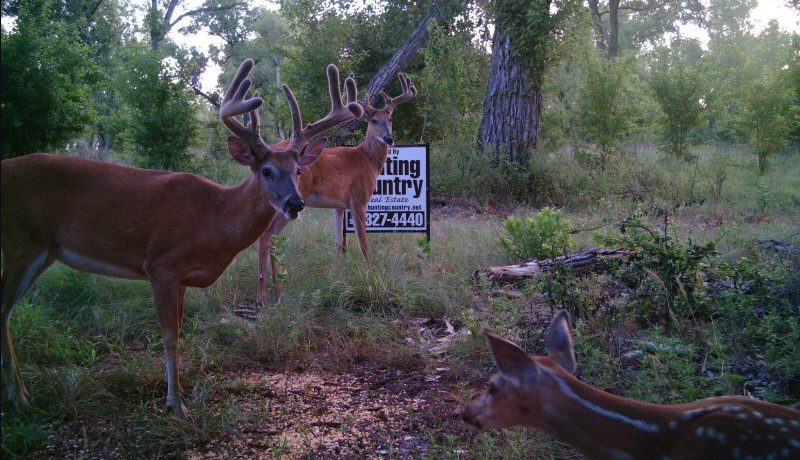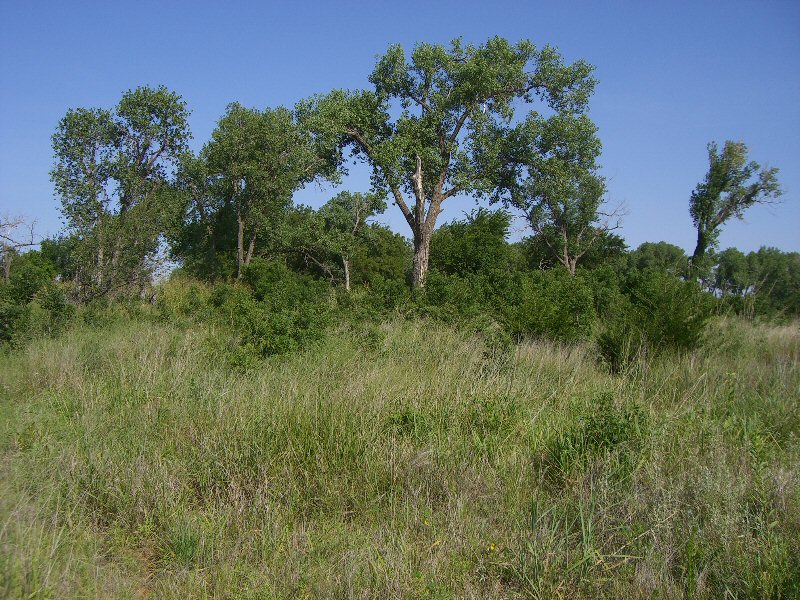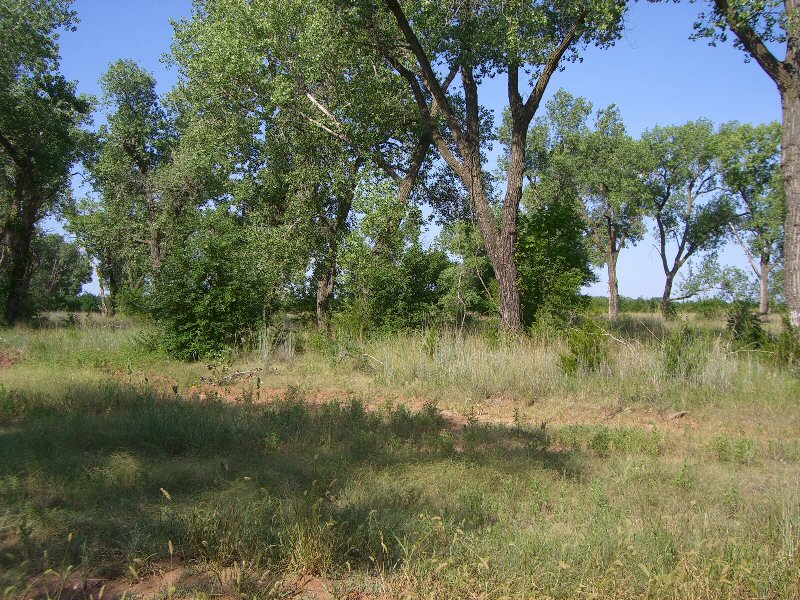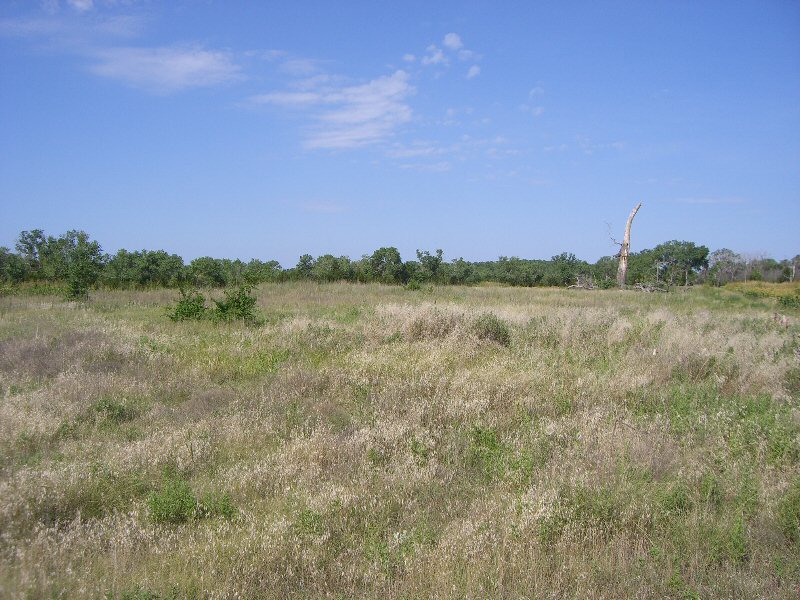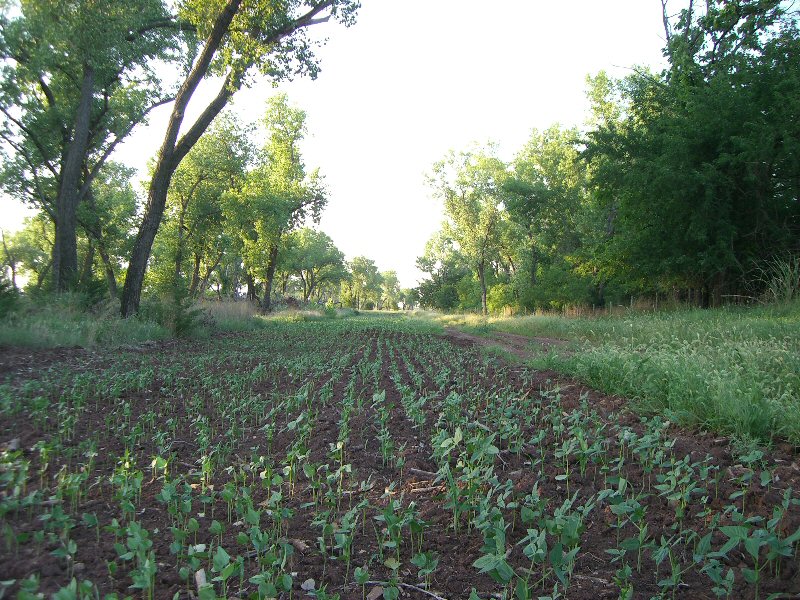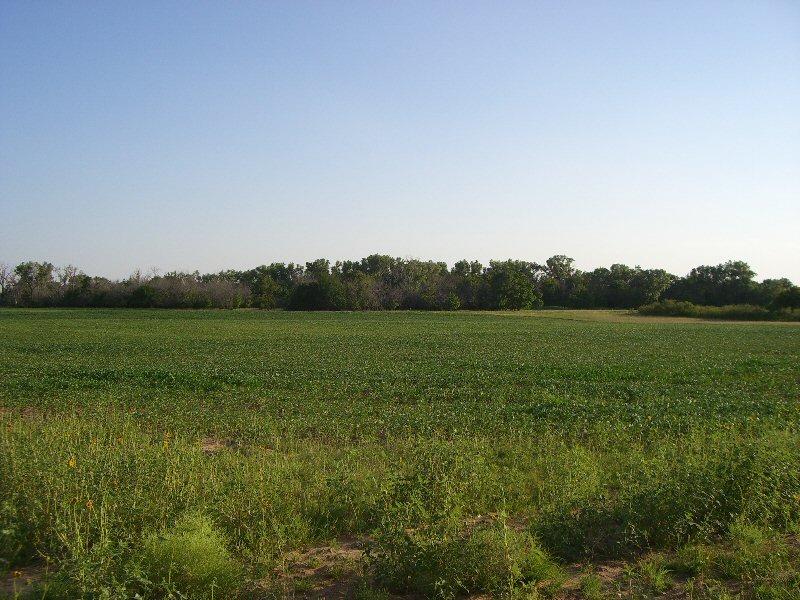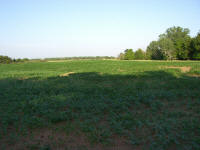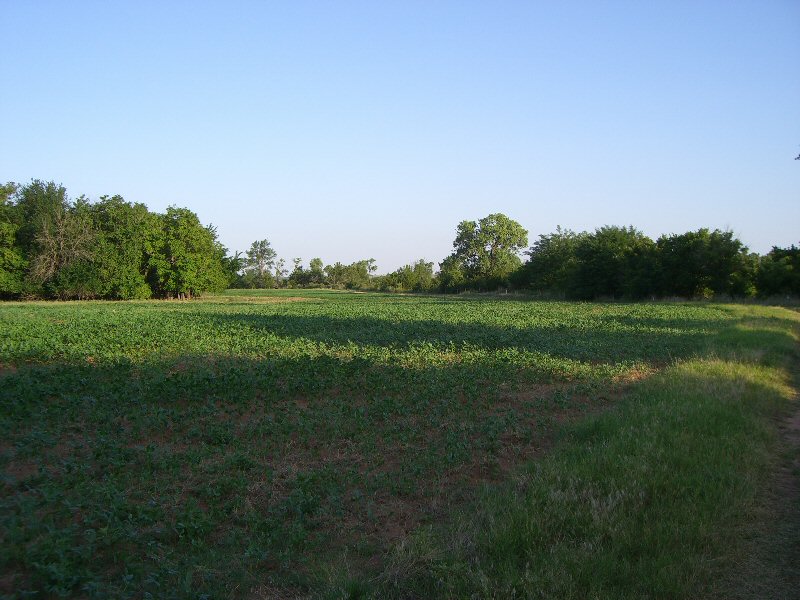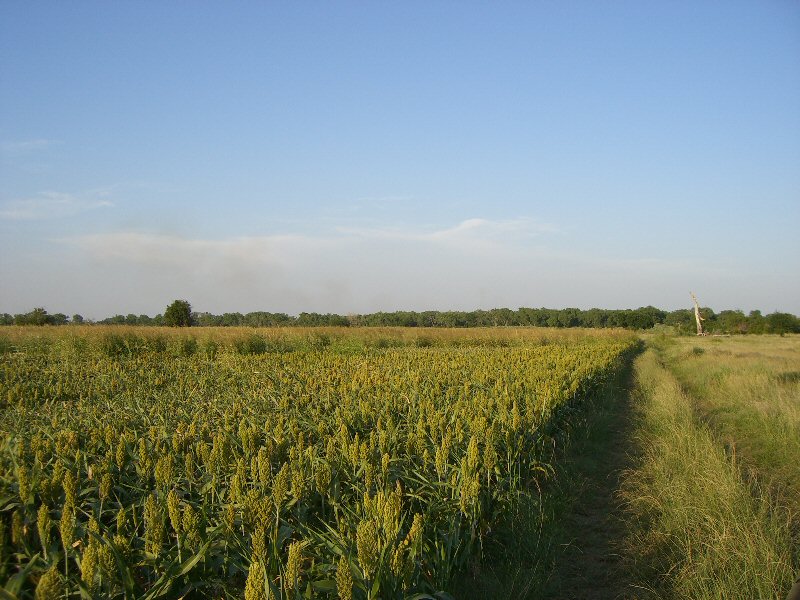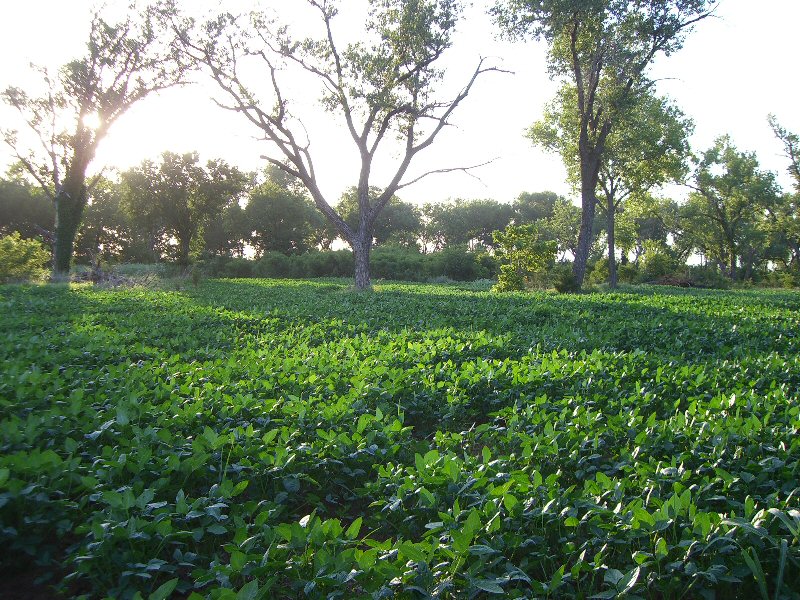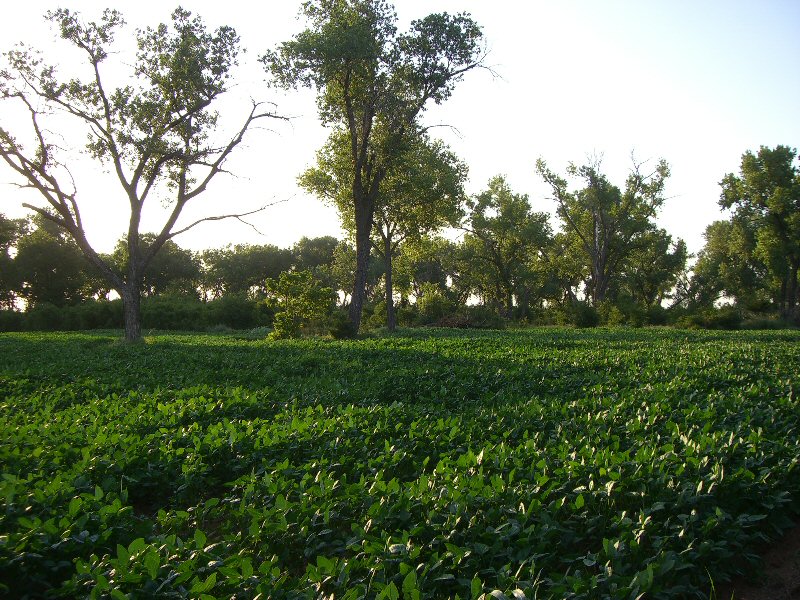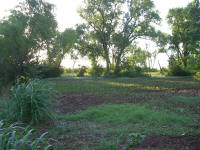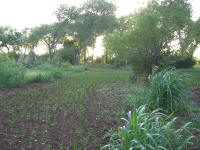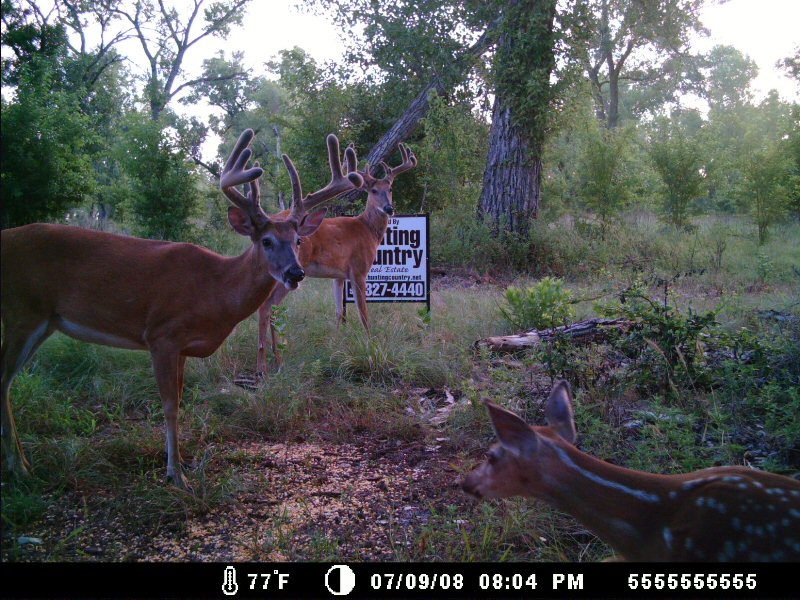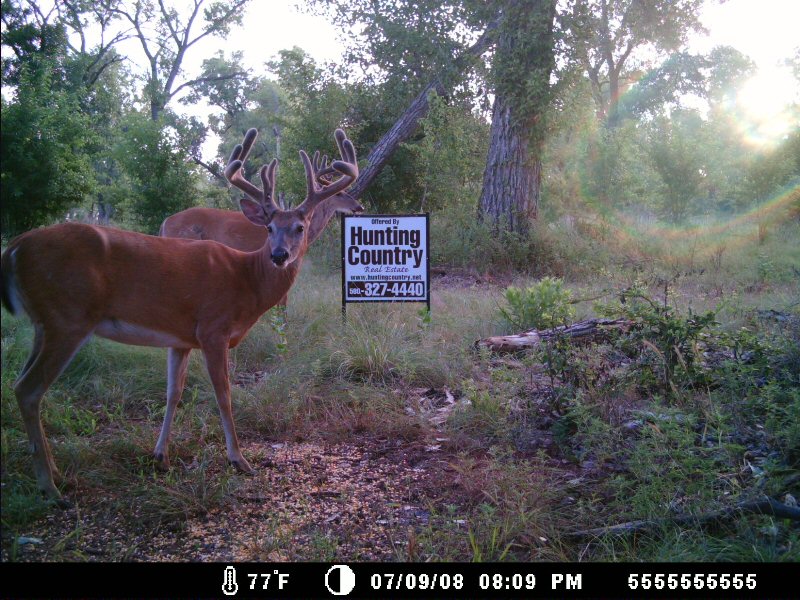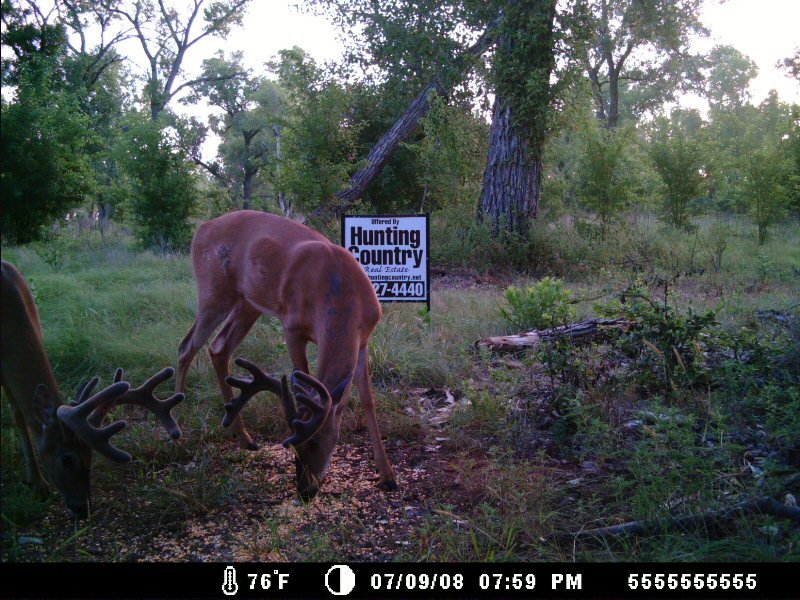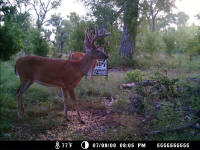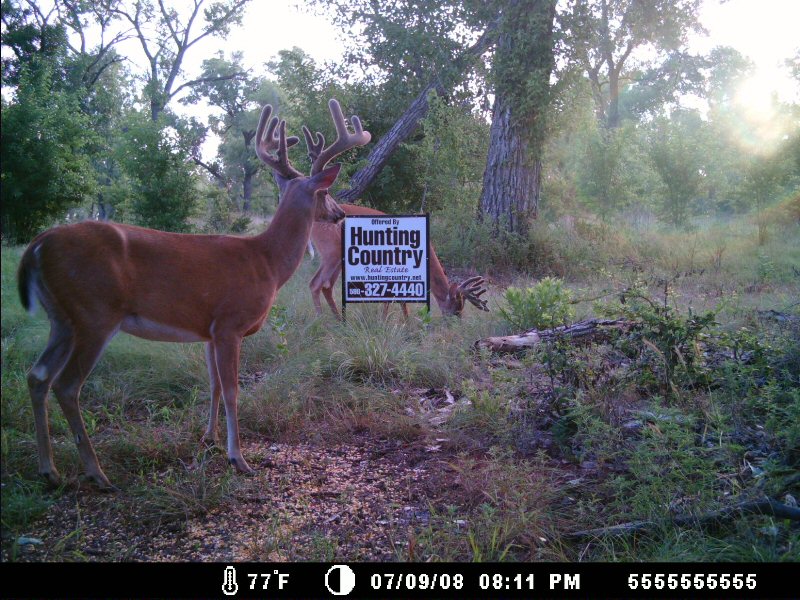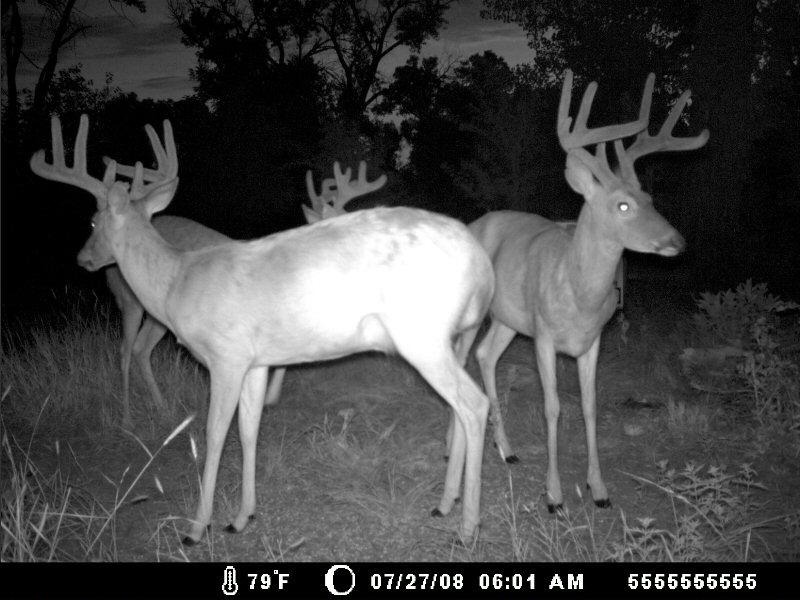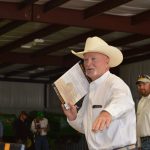This 120 acre farm was purchased in the Spring of 2008 for $120,000. Hunting Country is using this land as a project farm to show how easy and affordable it is to improve the quality of wildlife on the average land. Within 10 to 12 weeks following the acquisition the results were already noticeable. While the appearance may look like an “Extreme Makeover”, this project was pretty simple and affordable. When purchased, the land was nothing special, and mostly covered in native grasses, weeds, and cactus, with small areas of trees along the outer boundaries of the land. For the most part this was an average Northwest Oklahoma farm. The Whitetail numbers were “average at best” on this tract. The Salt Fork River to the south manages to breach the property in a couple places. After disking under nearly 60 acres half was planted to milo and half to cowpeas. 12 ft. to 20 ft. wide strips were disked in the timbered area along the eastern boundary and planted to cowpeas as well. To better insure the success of our food plots seed planting rates on the milo were reduced to below 5 lbs. per acre hoping to eliminate drought risk from our normally dry summers. The cowpeas are known for their tolerance to poor soil types and were planted at a rate of 25 lbs. per acre. Surprisingly enough the cowpeas were the easiest crop I’ve ever tried to grow. Our intentions are to disk under approximately half (15 acres) of the cowpeas in late August, then plant those areas to winter wheat. We want to have a variety of crops with different growing seasons to provide adequate protein and forage throughout most of the year. With rising fertilizer costs we hope to eliminate much of our expense by allowing the “disked-under” cowpeas to increase the organic matter in the soil and provide a nitrogen source for our winter wheat crop. The soil is mostly sandy loam and is extremely susceptible to wind erosion if erosion control products are not used occasionally. The cowpeas will also help to eliminate much of this issue by leaving more “trash” on the surface, rather than farming the ground “clean”. From the photos you can see different stages of the project and how the crops mature.
Before Photos:
After Photos:
Trail Cam Photos

